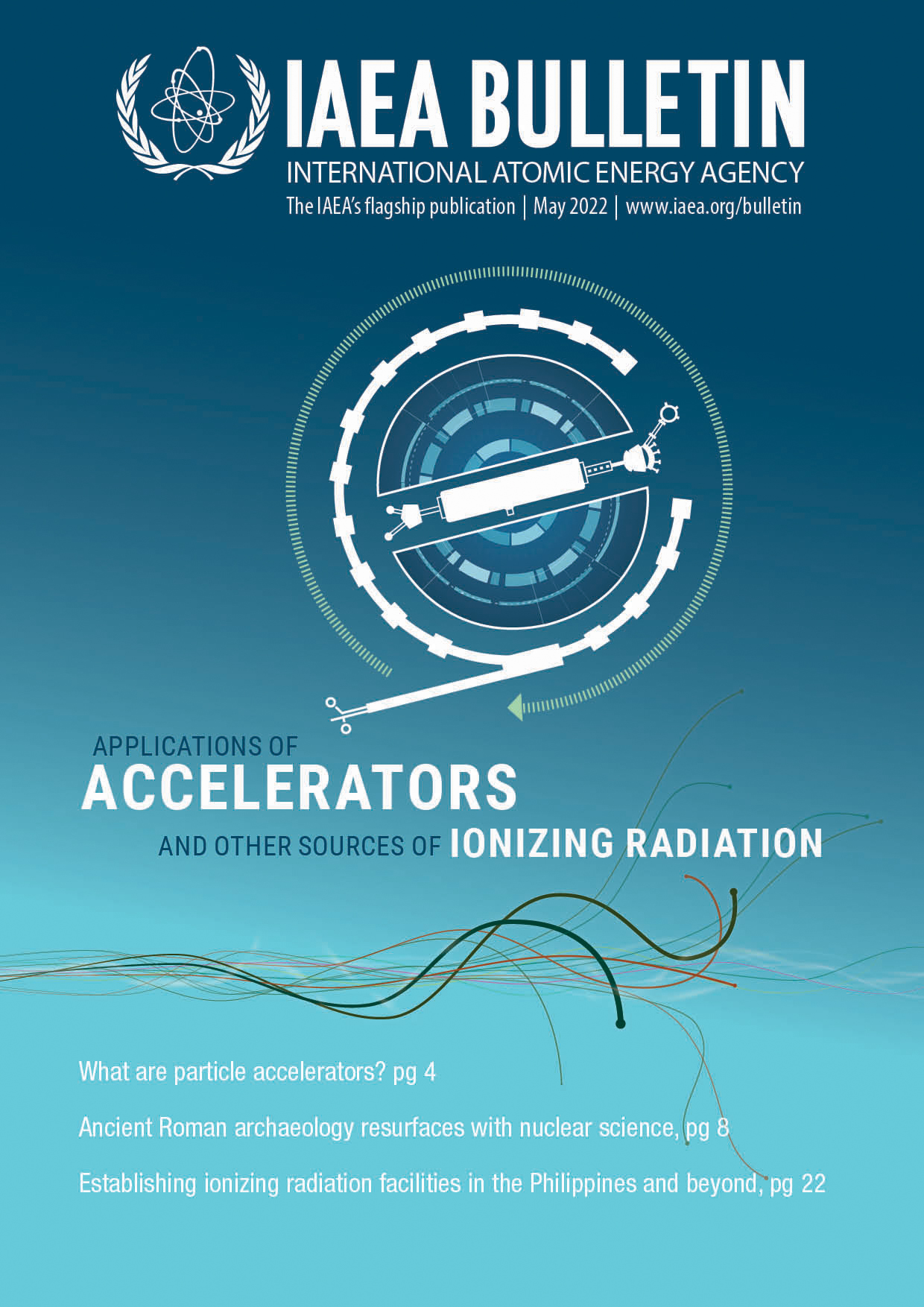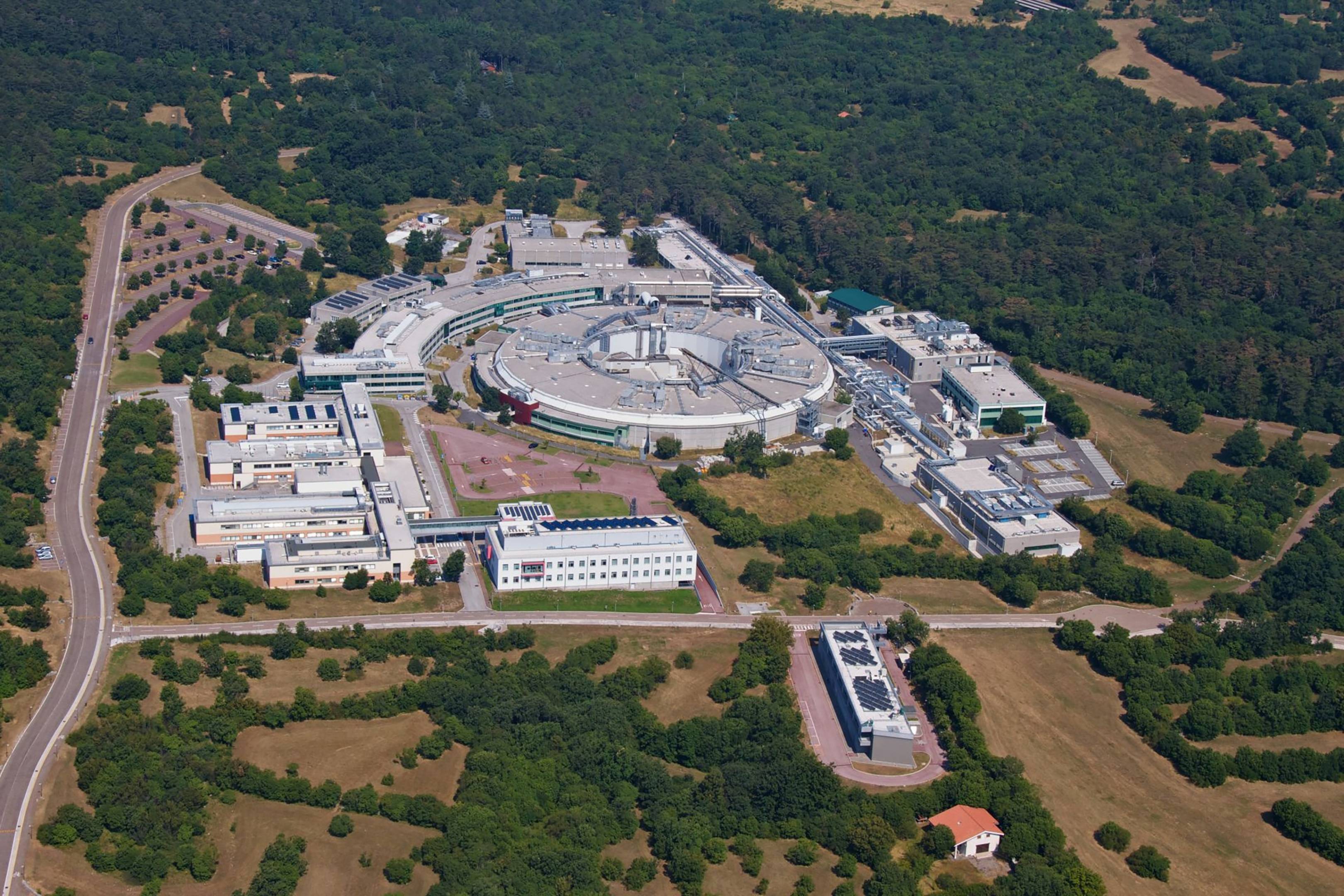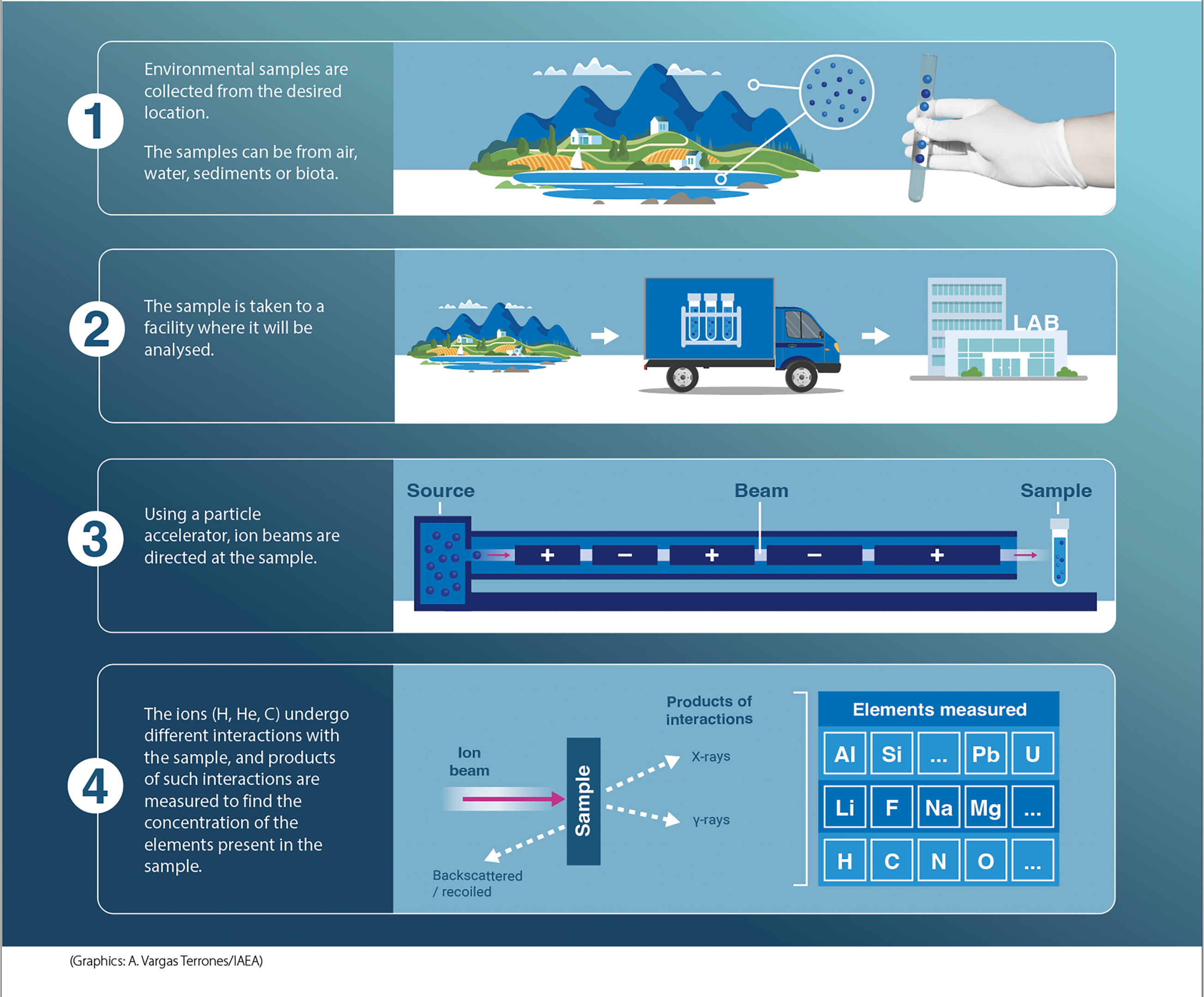Heavy metals and other toxic chemicals can pollute air, water and soil and, consequently, harm flora and fauna. To counteract such elements, scientists first need to better understand their behaviour. Accelerators help in this effort by using charged particle beams to strike selected materials to either analyse or modify their surface, composition, structure or other properties.
“Accelerator-based techniques offer unique capabilities and provide powerful insights into pollution in a fast, non-destructive and cost-effective way,” said Román Padilla, Nuclear Instrumentation Physicist at the IAEA. “Particle accelerators used for understanding and improving the environment come in all shapes and sizes, and accelerator-based ion beam methods, in particular, can help us characterize samples from soils, sediments, biota, water or fine air particles.”
The accelerators most commonly used for the characterization of samples from environmental monitoring are electrostatic accelerators.
Assessing air and water pollution is critical to addressing global health. Asia is home to over 60 per cent of the world’s population and 13 of its largest cities. Air and water pollution are high on the agenda in the continent’s largely urbanized areas. To help experts characterize air samples, the IAEA has been collaborating with 15 Asian countries to collect weekly samples of fine and coarse airborne particles, which impact the air breathed by over 110 million people. Between 2002 and 2017, accelerator-based ion beam techniques not only revealed the presence of many elements in collected samples but also helped to identify likely sources of air pollution.
In addition, electron beams, which are different from ion beams, can be used to treat wastewater or plastics (see page 10). For example, the technique has a clear advantage over conventional water treatment technologies, such as chemical and biological treatments, because with electron beams, no chemical disinfectants are needed to kill microorganisms. In Hubei Province, China, there is a specialized treatment facility that uses electron beam technology to sterilize medical wastewater and decompose antibiotics. With the capacity to treat 30 million litres of industrial wastewater per day, it is the largest irradiation-based wastewater treatment facility in the world and was built on technology transferred by the IAEA. The treatment process saves 4.5 billion litres of fresh water annually — enough to quench the thirst of 100 000 people.
Meanwhile, synchrotrons, a special type of ring accelerator, are also used in environmental studies and help experts to analyse elements, map their distribution and determine their chemical species. By using X-rays as a probe, these complex accelerators can be deployed in mining and industrial processes, where traditional methods cannot provide sufficient data to predict likely environmental outcomes, bioavailability or the risks posed by contamination. In mining, for example, synchrotrons help predict future behaviour, such as the movement or dissolving of metals or minerals.


